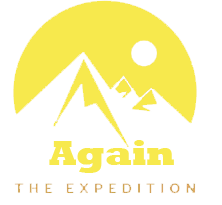Lemosho Route on Kilimanjaro
Overview of the Lemosho route
Lemosho is a classic trail that has gained much popularity in recent years — and deservingly so. It offers stunning views, an excellent acclimatization profile, and some of the highest summit success rates among all Kilimanjaro routes. Starting on the western slope of the mountain, the Lemosho route is offered in 6-, 7-, and 8-day itineraries. One of its main highlights is Cathedral Peak, one of the highest points of the Shira Volcano at 3,872 m (12,703 ft), where climbers can take an acclimatization hike and enjoy breathtaking views of Kilimanjaro. Another unique feature of Lemosho is the presence of massive, alien-like Dendrosenecio kilimanjari plants that grow exclusively on this mountain. Notably, it was the Lemosho route that Angela Vorobieva, at the age of 86, took with Again Expeditions to reach the summit of Kilimanjaro, setting a Guinness World Record as the oldest person to ever climb the mountain.
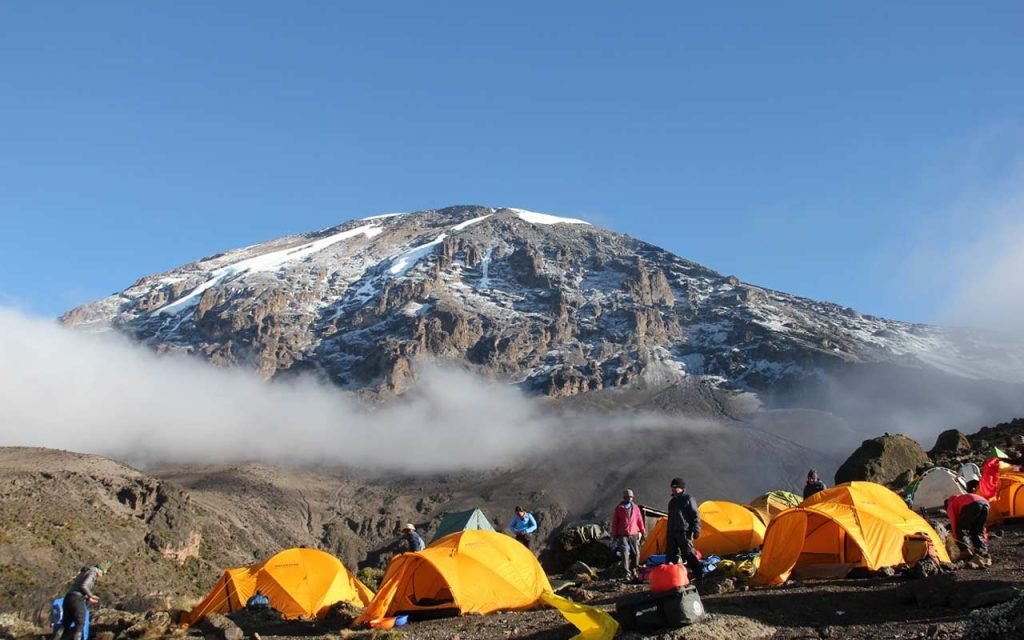
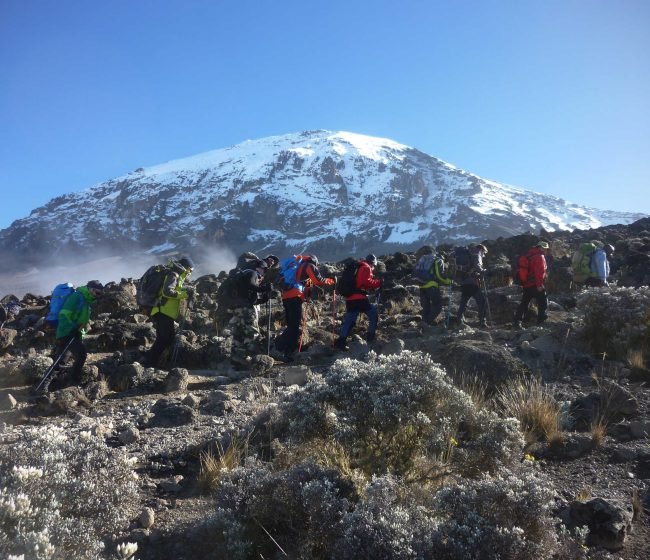
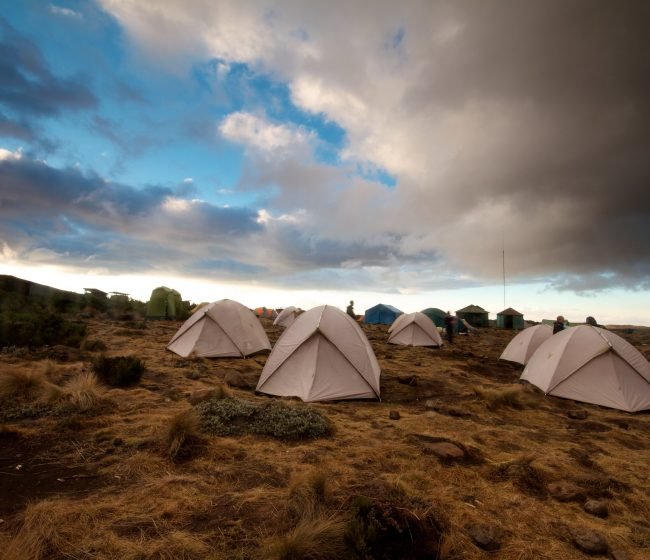
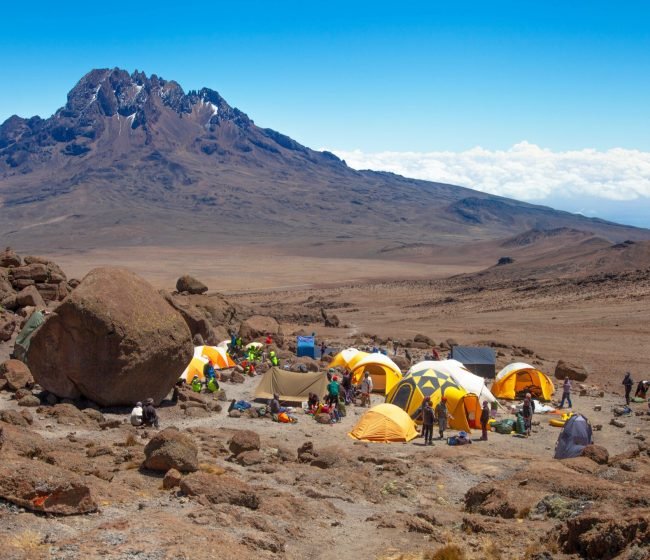
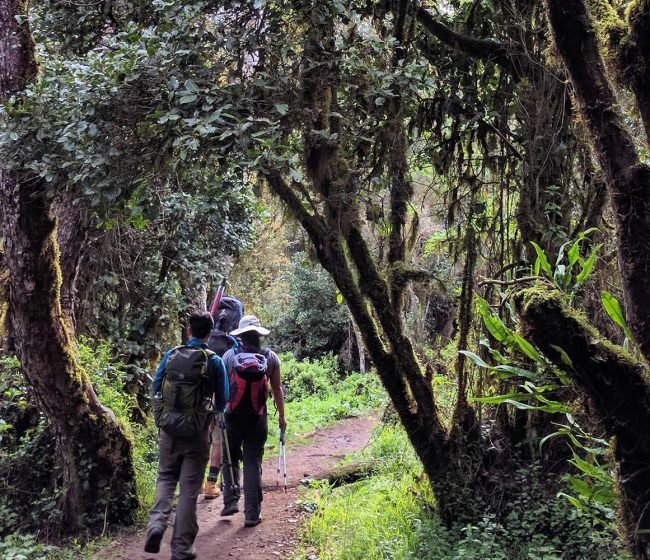
Expert recommendation
Lemosho is our favorite route, and for good reason. Its breathtaking scenery and smooth acclimatization profile make it the top choice for those planning their first Kilimanjaro adventure with Again Expeditions.
We offer three Lemosho itineraries: 6, 7, and 8 days. Many climbers wonder which one suits them best, so here’s a helpful guide:
6-Day Itinerary: Perfect for experienced trekkers who have previously hiked at elevations above 4,000 m (13,100 ft). To safely consider this option, we recommend completing a multi-day high-altitude trek within three months prior to your Kilimanjaro climb.
7-Day Itinerary: Best for climbers with trekking experience but little to no exposure to high altitude. You’ll begin at 3,414 m (11,200 ft) as our vehicle bypasses the tropical forest. The first two days involve easier hikes with minimal altitude gain, conserving energy for the steeper ascents ahead. This is our most popular Lemosho option, chosen by over 50% of our climbers, including many first-timers who achieve excellent summit success rates.
8-Day Itinerary: Recommended for those who are new to trekking or haven’t hiked in a long time. The added acclimatization day maximizes your chances of reaching Uhuru Peak while easing you into the trekking routine. Unlike the 7-day version, this route begins in the lush tropical forest, offering extra scenic variety at the start of your journey.
No matter which option you choose, climbing Kilimanjaro requires at least a moderate fitness level – even for the beginner-friendly 8-day trek. At Again Expeditions, we’ll guide you every step of the way to ensure a safe, memorable, and rewarding experience.
Lemosho Route Detailed Itinerary
Day 1; Arrival
Arrival at Kilimanjaro International Airport (JRO), where you will meet an Again Expeditions representative for your transfer to the hotel included in the package rate. The hotel is well-prepared to ensure a comfortable stay, offering cozy rooms, hot water, attentive staff, a swimming pool, and reliable Internet access. In the evening, you will attend a briefing with our managers, who will go over all details and ensure you are fully prepared for the climb.
Private tour packages include shared airport transfers for your group, while additional individual transfers may incur extra charges. To minimize costs, we recommend coordinating your group’s arrival and departure times.
Day 2; High-Altitude Drop Off Destination And Trekking To Shira 2 Camp
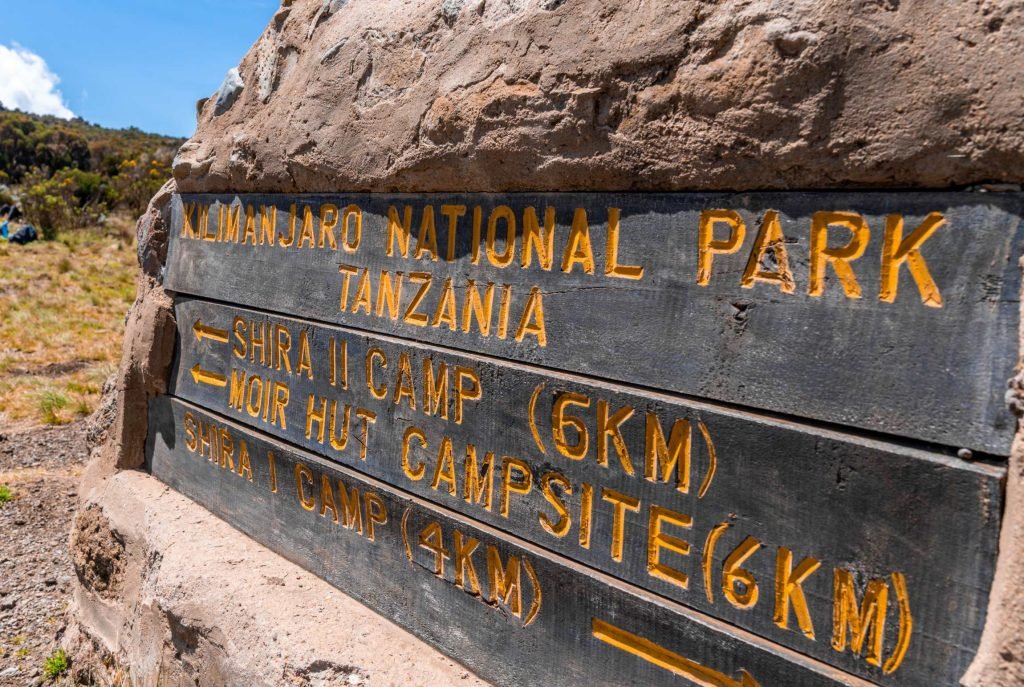
A guide and a mountain support crew will arrive at the hotel. Then you will travel by vehicle (roughly 3–4 hours) to Kilimanjaro National Park’s western entrance: Londorossi Gate. After the quick formality of acquiring climbing permits and registering with the search and rescue service, the group continues upwards towards their drop-off point by off-road vehicles (reaching 3,414 m / 11,200 ft). Here you can see stunning views of the Shira Plateau for the first time.
The route from your drop-off point to your first high-altitude camp, Shira 2, features a moderate gain in altitude and is not too physically challenging. Due to this, you will be able to properly begin the process of acclimatization. By the time you reach the camp, our professional mountain crew will have already prepared everything necessary, put up the tents, and begun preparing dinner.
PLEASE NOTE:This will be your first day at this altitude, so it is strongly recommended you heed the following instructions from this point on:
- Drink over 4 liters of bottled water daily (little by little, frequently);
- To help alleviate symptoms of altitude sickness, consider using a preventive measure like a high-altitude aid medicine. Many mountain climbers take such pills in the morning, before they begin their ascent, to reduce discomfort associated with altitude sickness. Our managers will provide more specific details together with your travel itinerary. We recommend consulting your doctor prior to the trip to discuss any potential allergies or health concerns.
At night you may experience discomfort associated with acclimatization to the high altitude: because of a reduction in your breathing pattern at night, your body gets less oxygen than during the day. Taking altitude into account, you may therefore start feeling sick and experience a headache. Pay attention to your own body and tell your guide if you start feeling any symptoms of altitude sickness.
Day 3; Trekking From Shira 2 Camp To The Lava Tower and Descent To Barranco Camp
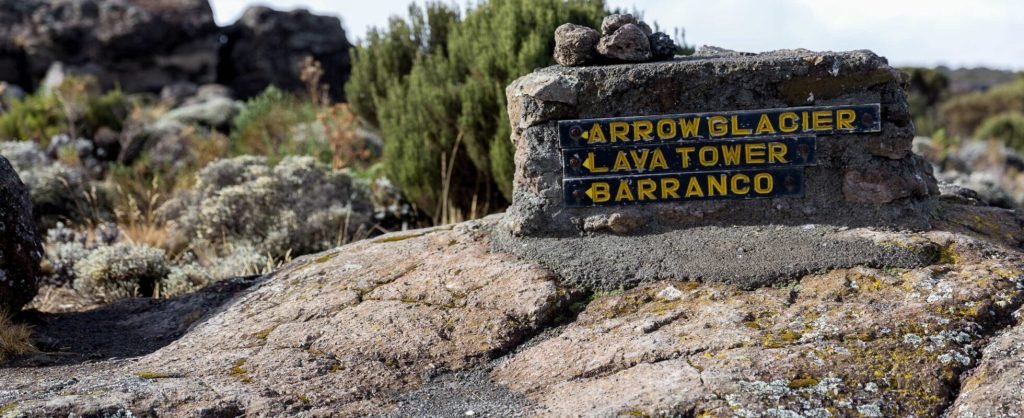
After breakfast, you will leave Shira 2 Camp and start your hike to the key point of the route: Lava Tower. This section of the route has a lot of ascents and descents that end in a camp at over 4,600 m (15,091 ft). Portions of the trek may be difficult, and it is common to experience some discomfort, but in order to successfully acclimate to the altitude you have to spend at least 1–2 hours here, so this is where you will enjoy your lunch.
Then, you will descend to Barranco Camp. Here you can see the famous Barranco Wall, impressive in both its massive size and steepness! The next day you will be climbing it, but don’t worry: it features a very simple hiking trail and is not intimidating at all.
Day 4; Trekking from Barranco Camp to Karanga Camp
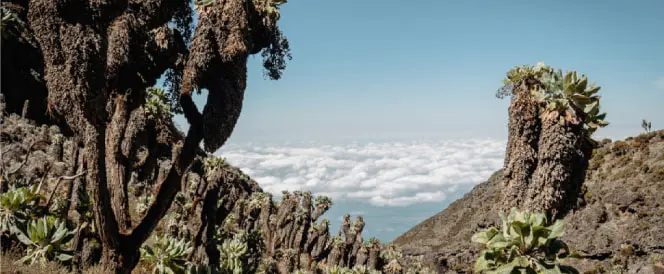
This day you will wake up early and enjoy a filling breakfast before starting to climb Barranco Wall. We recommend you leave the camp as early as possible to avoid crowds of the other groups, which can slow you down. Hiking up the gorge wall is not difficult and only takes around an hour. After the climb, you can have a rest and take photos in front of the Kibo volcano.
Then you will start a more difficult hike to Karanga Camp, which features numerous ascents and descents during the route, but don’t worry: our guides are experts at choosing an optimal pace for the group. After reaching the camp you will be offered warm lunch. After a couple of hours you will have to complete an acclimatization hike in the direction of Barafu Camp with a 300 m (984 ft) gain in altitude and then descend back down to the camp.
PLEASE NOTE:The acclimatization hike is an easy trek with a slight gain in altitude done in order to speed up the acclimatization process. You should take the acclimatization hikes very seriously. They help increase your chances of successfully summiting Kilimanjaro and save you from the consequences of altitude sickness.
Day 5; Trekking from Karanga Camp to Barafu Camp

In the morning, after a warm and hearty breakfast, you will begin your hike to Barafu Summit Camp. This camp is the starting point for the final night summit to Uhuru Peak (5,895 m / 19,340 ft) – your end goal. Our team will set up camp ahead of time, so when you arrive your tents and sleeping bags will already be prepared, meaning you can just relax and rest when you reach Barafu Summit Camp. It is better to spend the remainder of the day resting and sleeping before the night summit.
Day 6; Ascent to Uhuru Peak and Descent to Millennium Camp
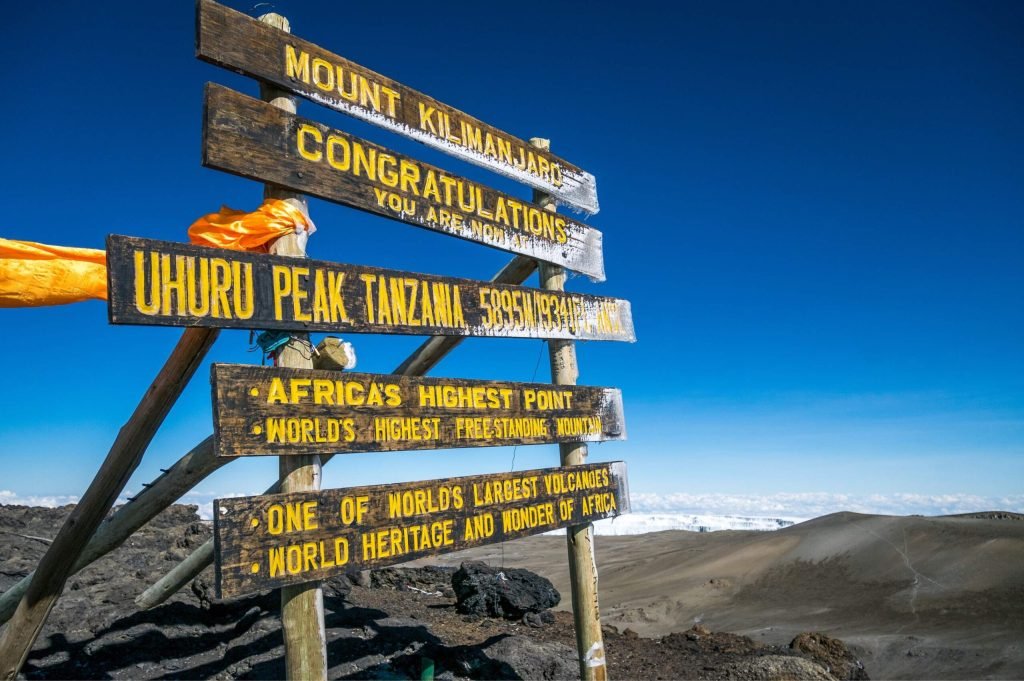
You will depart from Barafu Camp at night and start the final summit to Uhuru Peak of Kilimanjaro (5,895 m / 19,340 ft). Technically speaking, the climb is relatively simple; however, at this high altitude, even regular physical activity can feel strenuous. Therefore, every two climbers will be paired with a personal guide for the entire ascent to monitor their physical and mental well-being more closely. After your successful ascent to Uhuru Peak, you can descend to the nearest glacier, if desired. Then you will return to Barafu Camp and after a 2-hour rest continue your descent to Millennium Camp.
PLEASE NOTE: Don’t forget that 90% of all accidents occur during the descent, including broken arms and legs. Please pay attention to your feet, as there is a high risk of damaging your toenails.
Day 7; Descent from Millennium Camp to Mweka Gate
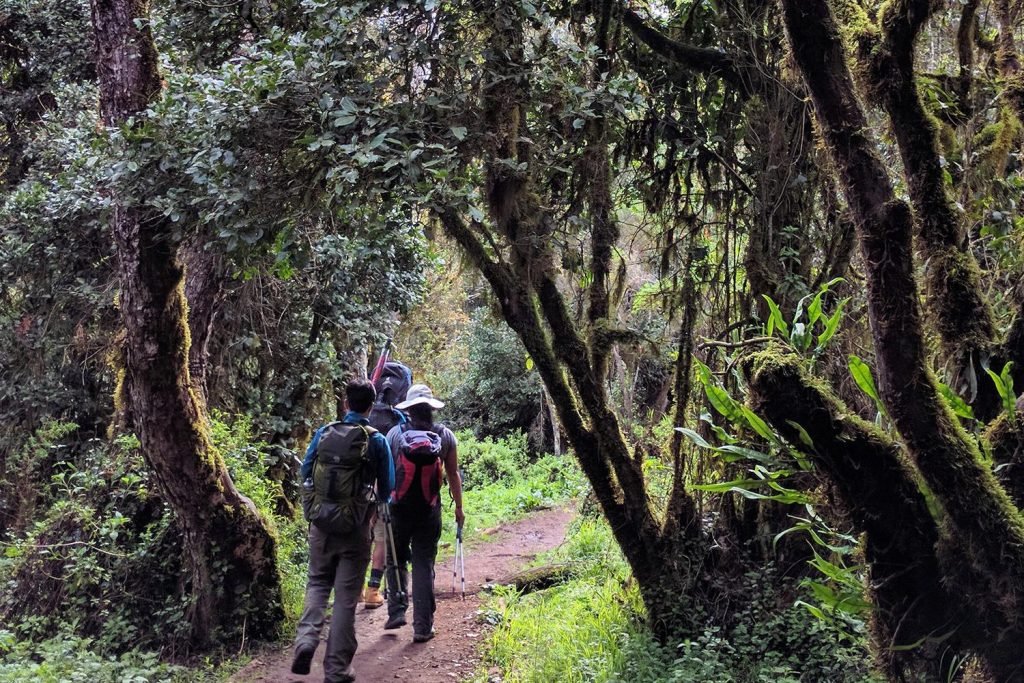
You will depart from Barafu Camp at night and start the final summit to Uhuru Peak of Kilimanjaro (5,895 m / 19,340 ft). Technically speaking, the climb is relatively simple; however, at this high altitude, even regular physical activity can feel strenuous. Therefore, every two climbers will be paired with a personal guide for the entire ascent to monitor their physical and mental well-being more closely. After your successful ascent to Uhuru Peak, you can descend to the nearest glacier, if desired. Then you will return to Barafu Camp and after a 2-hour rest continue your descent to Millennium Camp.
PLEASE NOTE: Don’t forget that 90% of all accidents occur during the descent, including broken arms and legs. Please pay attention to your feet, as there is a high risk of damaging your toenails.
Day 8; Departure
Rest in the hotel and transfer to the airport.
PLEASE NOTE: Hotel check-out is at 11:00 AM. In case you need a late check-out because of an evening flight, there is the option to extend your hotel stay for an extra fee.
